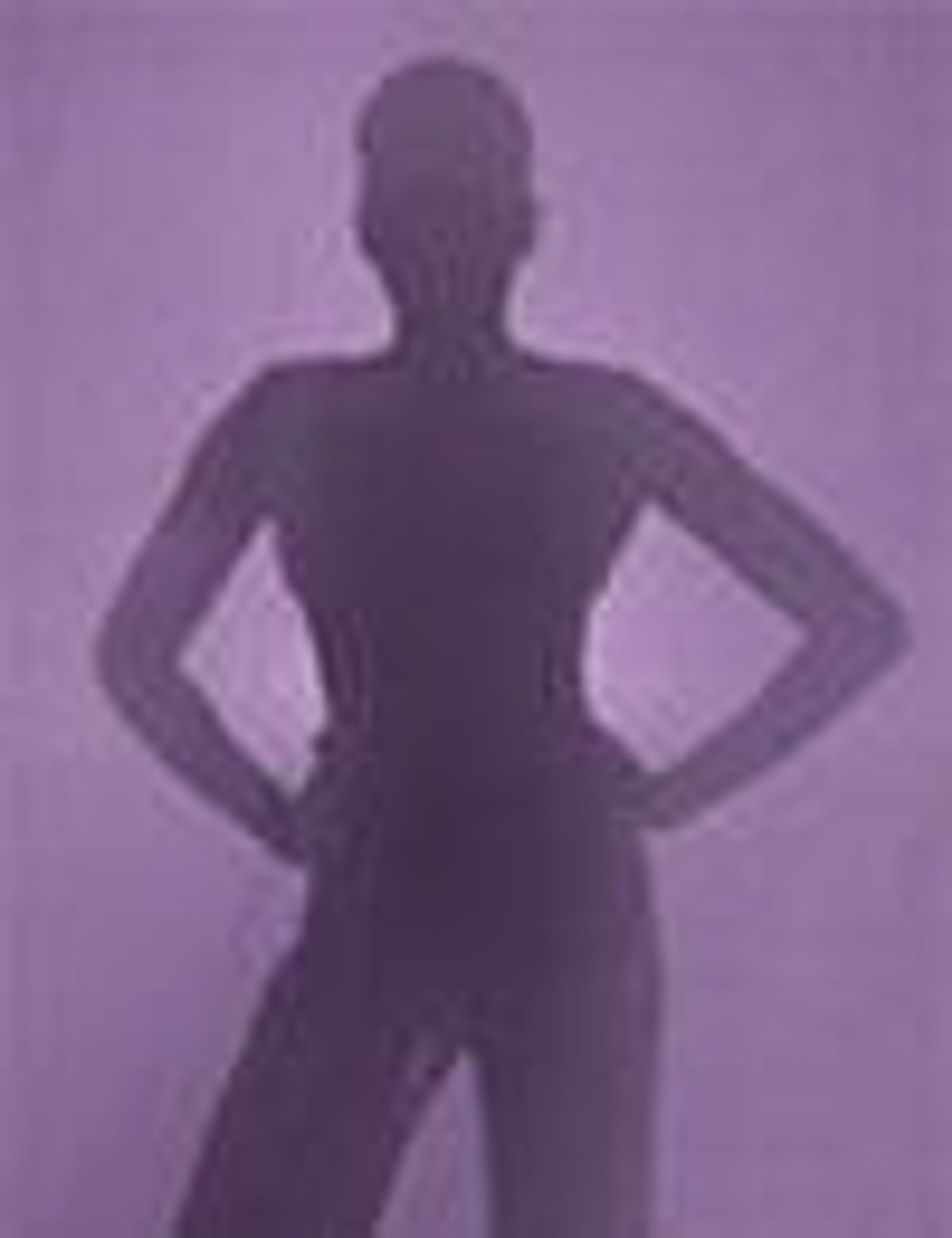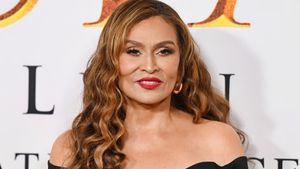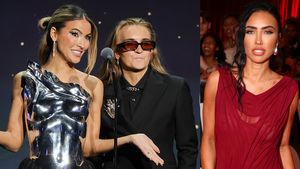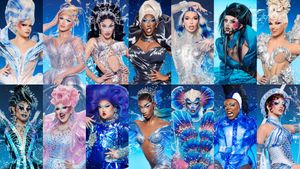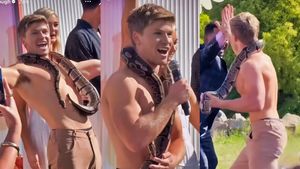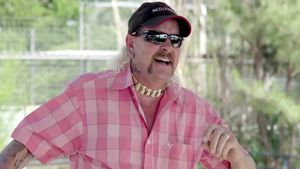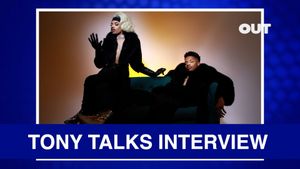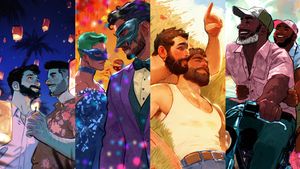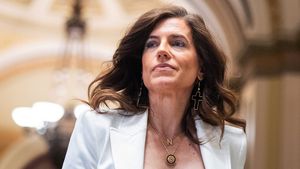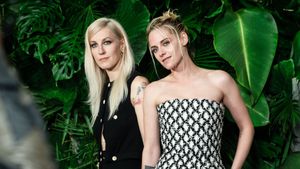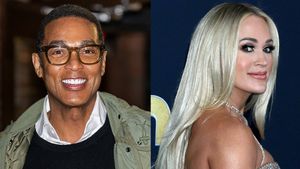Despite Time
Out New York's snarky plea for Bravo to
wake up and smell the "scruffy dykes" who need
makeovers--a response to last month's premiere of
Queer Eye for the Straight Girl--I've been
thinking that a more interesting premise would be a Dyke
Eye for the Straight Girl, complete with a
cast of big-bellied bull dykes boasting bulging muscles and
motorcycles, offering fashion tips to Atkins-enslaved
straight girls saturated by Cosmopolitan and
Clinique. Fat chance! If filtered through the lens of our social and
cultural lesbian stereotypes, the dyke declarations on
a Dyke Eye for the Straight Girl might read: * Why get a manicure when you can bite your
nails for free? * It's normal if you've been
together for three months and aren't having sex anymore. * Closet the purse (along with your dresses); a
chain wallet is cheaper and attaches nicely to cargo pants. * Lose those hellacious high heels; buy yourself
some sensible shoes. Birkenstocks, perhaps? * If he doesn't pick you up with a U-Haul
on the second date, dump him! * Get a cat. * Buy lots and lots of tea. * Be in bed by 9 p.m., even if it's Saturday. * Don't save the bonbons for when he
breaks up with you: Eat them anywhere, anytime, all
the time! * Friday night fun is shopping at Home Depot. Advice like this might land her some lesbian
lovin', if she's lucky, but send every
straight guy (at least all the ones I know)
running--very fast. However amiss the above stereotypes might be,
when most Americans think "lesbian,"
these are the images and ideas they conjure up--which
are several light-years away from the dykes portrayed on
queer shows such as The L Word. In fact, I'd argue that the lesbian
configurations in popular culture are a forced
appropriation of gay male culture, styles, and
attitudes, rendering lesbian visibility and appeal
contingent on a very limited definition of what a
lesbian is: conventionally pretty, white (or just
off-white), feminine, and affluent. In other words, a
"lipstick lesbian" that all men (gay and
straight) can stomach. While Honey Labrador is the dyke addition to the
new Queer Eye for the Straight Girl, she is, like the
cute cast on The L Word, what I call a
"gayified" lesbian. Tellingly, David Collins,
Straight Girl's openly gay creator and
executive producer, recently told Out magazine that
Labrador is "a gay man in a lesbian's
body--everything we could've hoped for." I'm not saying that lesbians like
Labrador and those portrayed on The L Word
don't exist, or that there isn't a loud
note of progress in portraying lesbians as something
other than frumpy and bull dyke-ish. But isn't it
striking how well they conform to our cultural
stereotypes of gay men (gorgeous, fit, wealthy,
fashionable, cultured, artistic) rather than lesbians
(overweight, poor, unfashionable, sexually lethargic)? Take
a closer look at The L Word and you'll
see that it's not only straight men who are
being metrosexualized. There's Shane, whose wardrobe is
super-gay, with her snug-fitting leather pants and
tight muscle shirts; she's the bad ass, who can
get any woman, anytime, anywhere. (She is the lesbian
counterpart of Brian, the sexual predator on Queer
as Folk.) Then there's Bette, the
director of a modern-art museum, and Alice, the
journalist at a trendy fashion magazine. In season 1 we had
Marina, the owner of a packed and prospering
cafe, who seduced Jenny, the budding fiction
writer, away from her boyfriend, Tim. Remember how she
seduced her? She walked in on her while she was in the
bathroom (a notorious spot for public gay male sex) at
Tina and Bette's house the first night they
met, then planted an uninvited, passionate kiss on
her. Indeed, the world of these women is centered on sex.
That isn't anything to frown on, but again,
sex-centricity aligns them with gay men, who have
historically seen sexuality as the key to their liberation. For example, Alice, the bisexual character, made
a sex chart with Shane, the sexual stallion, at its
center so she can trace who has slept with whom. Dana,
who started the show as the deeply closeted femme tennis
player, jealously pondered how Shane is so sexually
successful with the ladies. Alice offered this
startling explanation: She's got "nipple
confidence." (Are nipples the lesbian phallus?) At
one point Bette, who was introduced as one half of seemingly
the only functional monogamous relationship on the
show, felt compelled to say, "Monogamy
isn't just hypothetical; it's something that
people actually practice." Since when have lesbians become sex-crazed commitment-phobes? Since...well, they haven't. But lesbians have to hitch a ride on "gay
male fabulousness" in order to be mediaworthy.
The bull dyke just won't do. And it's
not just because she's seen as an aesthetic disaster.
It's because she's a forceful fist swinging in
the face of Prada shoes, Gucci purses, Versace
dresses, and Wall Street frat boys. Unlike her lovely-looking gay brothers and
sensual straight sisters, she hasn't been
penetrated (literally and figuratively) by advertising
and the need to sexy up for the status quo. But stereotypes
aside, how liberating a bull dyke's advice
might be to a straight women (or a lipstick lesbian):
wear what's comfortable and affordable; you look
beautiful without makeup; stop starving yourself; and so on. Here's hoping Logo, Viacom's
all-gay cable network launching in June, is bolder
than Bravo and Showtime.
